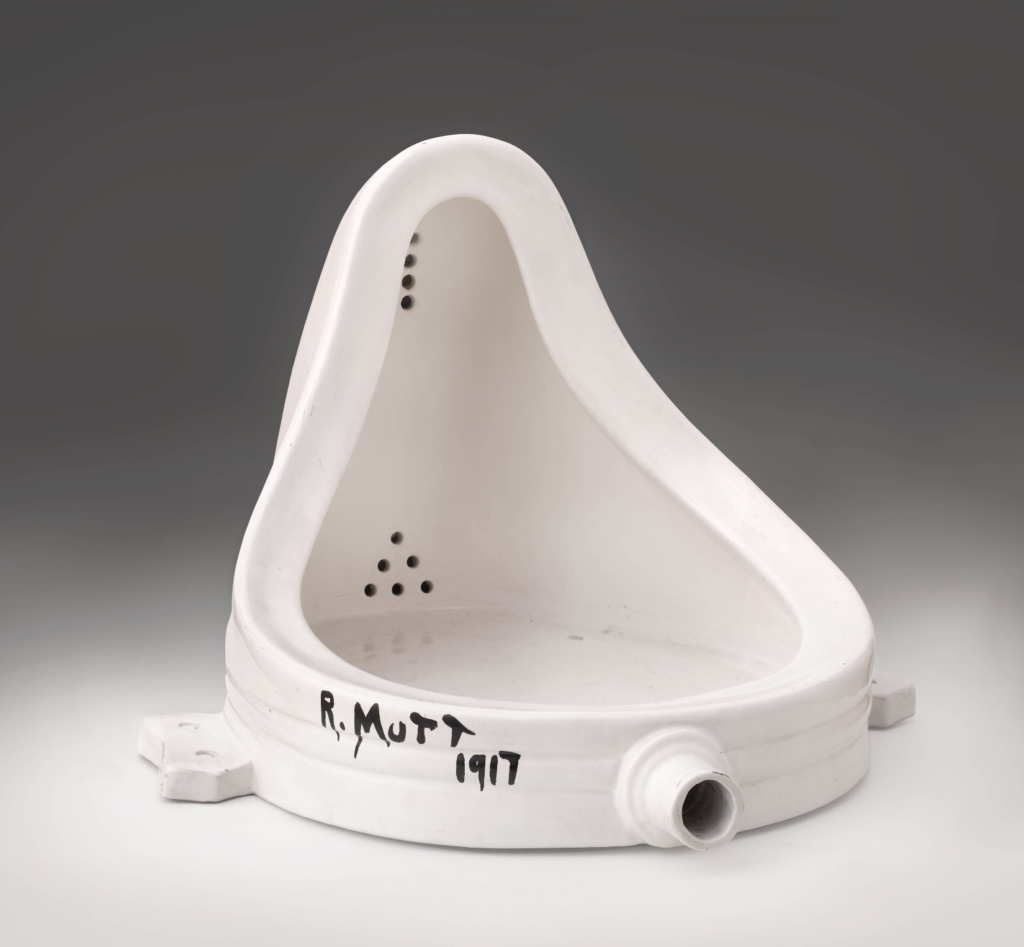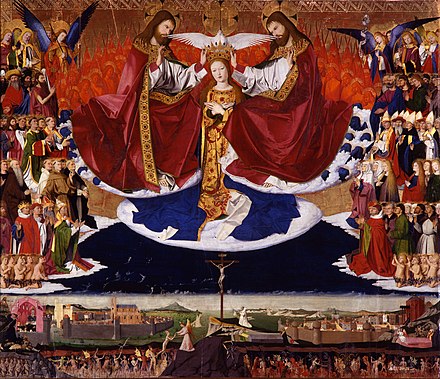Values of Art
written by art historian & curator
Art was created by people to serve people. Spanning through millennia, art under its different shapes is the oldest manifestation of human creativity, spirituality, and culture. Through these testimonials of our ancestral past, we try today to find out more about who we are, where we come from and what is our purpose on Earth. Universal ideas about truth, life, and death have always haunted people and art was one important tool to express feelings such as fear, love, adoration, or piety.
Although art is considered an intrinsic part of our existence, people have a different understanding of it. Some have a deep level of perceiving and reading through the messages conveyed in the canvas, while others stick to formal visual elements such as line and colour. Thus, is art for everybody? Can we all appreciate art? What was the importance of art in the past and how is contemporary art different from this matter?
Join our free online talks:
Values of Art
Defined as a human process of deliberate actions in the creative and imaginative spheres, art expresses beauty, nature, emotions, and conceptual ideas. By using recognisable elements such as animals and objects, art appeals to our physical and mental understanding.

An educated individual will have the knowledge and understanding of the key qualities that make art universal and timeless. Artistic movements have a specific historical context, message to encrypt, and certain technology to express their art. Understanding more of history means being able to perceive more in-depth human creations and to get to the core of their existence. Through material artefacts, we will learn more about ourselves today if we better study and understand the past. This is why art has always been a main vehicle to convey inestimable values for humanity.
Historical value
Art captured in its areas of expression such as painting, sculpture, decorative arts, and architecture, the historical timeline of human progression. From the Palaeolithic to the contemporary day, events such as wars, religious evolution, coronation, formation of kingdoms, urbanism, or geographical conquests were the main subjects of the canvas. From mortuary chambers to beautiful mosaics and sculptures, monumental scenes of historical miles and heroic characters capture the main moments of our past. Just like looking at a map, we decipher the main route of humanity from the past to the present.
Educational value
Educational value. For students, art is one of the main tools that trigger reflection and critical thinking. By studying painting and its other branches and by learning how to read through the many layers of both formal and symbolic elements, one can become a wiser individual, a caring human being, and a successful person in both personal and professional life. We might not all end up being artists, but we can definitely become better persons and more culturally engaged in our community. Critical thinking will help us filter information and not fall victim to fake and negative influencers.

Social value
Not only that in art we discover societal patterns and human behaviours over time, but we can enrich our personal relationships by attending artistic events. Arts offer substance to a conversation because we refer to ideas and values that reflect in our lives. One can easily compare the current way of life to how people used to live in the past. This can trigger introspection and a comparison process of the two perspectives, resulting in a reflection on our social place and development today.
Political value
Inseparable for centuries, politics and art have walked hand in hand to express ideologies and political views. Together with the Church, these two main powers have ruled over communities for the wealth of the state. Politics have used art to spread convenient ideas and to influence the masses. The symbolism of faith, life, and death was introduced in art and manipulated according to the state’s needs. Some leaders were presented as heroes, others were dishonoured, some ideas were promoted, and others were disgraced. It is fascinating to observe how certain people determined masses to follow them without a breath and of course, one can learn a lot from these episodes.
Economic value
Nowadays, investment is a crucial part of the success of the art market at an international level. Countless galleries, contemporary museums, art fairs, shows, and exhibitions don’t only display art but sell art to private and public buyers. Established names such as Picasso, Warhol, or Damian Hirst sell with impressive amounts of money adding to their artistic importance an economic value never to be lost. Masters of the past are among the most valuable artists of all time but some contemporary names gain recognition, at least for some while. To be seen who will survive the test of time.

Aesthetic value
Aesthetic value. When in front of a good work of art, our soul and mind get exhilarated and a process called katharsis triggers. This pleasure is a purely aesthetic experience after which one will remain deeply impressed by the content and visual form of the work. Equally aesthetic is the decorative purpose of art to beautify our homes and environment. Although it is intertwined with social and political values, aesthetics are a main characteristic of every artwork. We can enjoy other values such as educational or social in a beautiful creation placed in a public park or a science museum.
In fact, I don’t believe there is a single work of art that can strictly fit into one category. The richness of artistic creations comes from the fact that in every work there are several messages conveyed, under different shapes and colours, and that are motifs to subjective interpretations.
Views on Art
If one can measure the value of art is a questionable issue. In the past, art was seldom the expression of the artist, as it is today, rather the desires of a patron, the individual who commissioned and paid for the work. Because up to the French Revolution, the state and Church were the most frequent patrons, the subject, the realisation, the materials, and other practical matters such as time and remuneration were established in a contract. Many times, the artists were not regarded as artists but as skilled labourers or artisans. The truth is that in terms of financial value, their art was precious due to the expensive materials used in its depiction. Just consider the colour blue, which was made from the rare Lapis Lazuli or the golden foils used in the background of religious paintings during the Middle Ages.
Due to the costs, in the past art was available only to a small part of the population, the elite. Nobles, aristocrats, and rich merchants were the few selected to enjoy the pure beauty of art in their private spaces. Having a good education, they could also penetrate the mysteries of the painting and read symbols, and Latin quotes and understand the metaphors encrypted in the work. The poor could witness public art such as architectural masterpieces and paintings inside the churches. These also carried substantial content but for most people, only the visual representations of the biblical figures mattered as they did not know how to read and understand a piece of art.

In the modern era, the status of art and artists changed. Artists shifted from being simple craftsmen to thinkers and creative personas, who could be valuable for their own thoughts and ideas. After the liberation of art in the 19th century, both men and women artists engaged in a fierce fight against traditionalism and elitism to make art available to everyone. As the level of literacy grew, more and more people were open to watching and experiencing art. Also, the subject changed from being nationalist and religious to being actual and reflecting the current state of society. If a plague would spread in the cities, artists would address that issue right away and represent it from multiple perspectives. If a war would start, artists would be on the frontline to capture the horrors and the sufferance to show people the truth about it. Thus, art descended from a pedestal into ordinary lives, with ordinary thematic but relevant for each of us.
There is no need for profound studies to understand a reality that is affecting everybody at a personal level. Individuals resonate straight away at recognisable images, at death and pain, at natural catastrophes. Nowadays, art topics are enriched and there is at least one type of art suitable for everyone. We are subjective in our visions and have several levels of understanding, but one thing is sure: Art is part of our lives and we will love the pieces that touch us in our most profound feelings and emotions. A picture is worth a thousand words when relevant ideas are embodied in a single work of art. This is the universality and the timelessness of art. This is the art we will all understand now and after one thousand years.
GET MORE FROM LEVEL


Leave a Reply